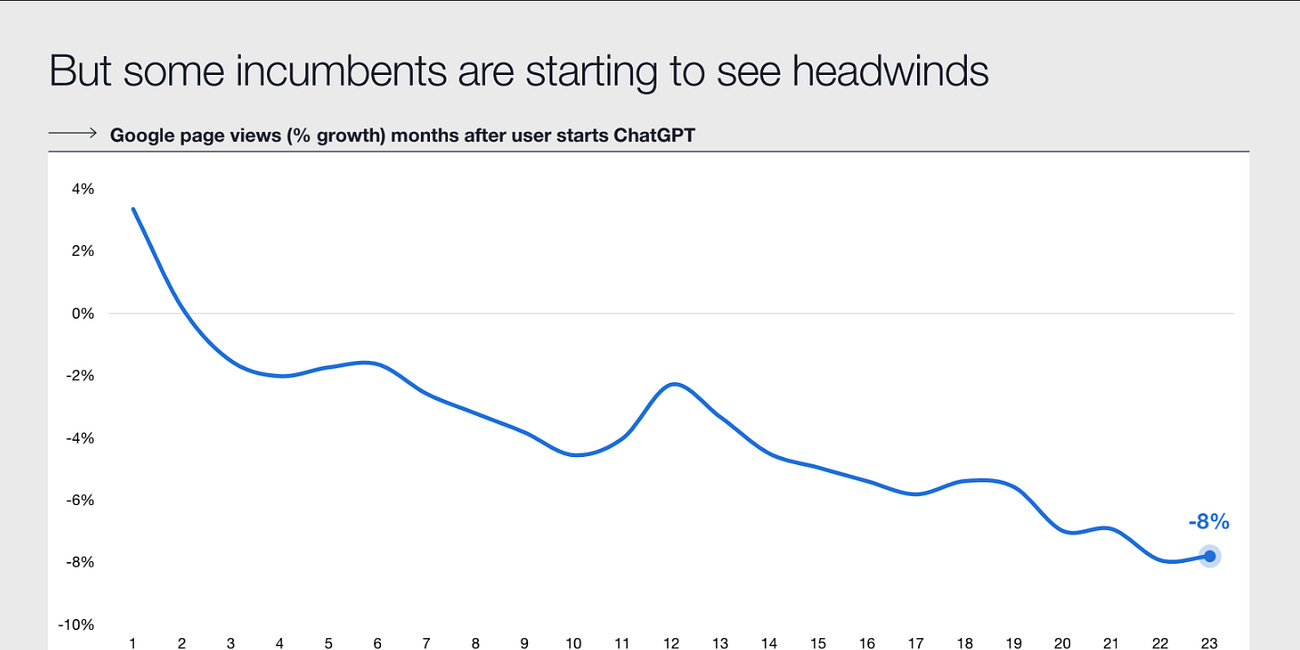🔮 Sunday edition #530: Google’s search slippage; Copyright’s nine-figure gate; AlphaGenome’s diagnostic leap; OSI…
🔮 Sunday edition #530: Google’s search slippage; Copyright’s nine-figure gate; AlphaGenome’s diagnostic leap; OSINT decoys++An insider's guide to AI and exponential technologiesHi, it’s Azeem. Courts say fair use for AI training survives—if you can afford hundreds of millions to buy the books you need. Meta and Anthropic can; most newcomers can’t. At the same moment, AlphaGenome can read DNA and predict its function. Money is ring-fencing words just as code liberates life. All that and more in this week’s edition. What’s next for GoogleIn this week’s Saturday commentary, I analyse the future of Google search. It’s quite the pickle, with much to play for. See also: If the DoJ rips Chrome from Google, the browser wars will ignite overnight. For a glimpse of that AI-augmented future, look at Dia, a browser that lets you chat with your tabs. Fair use, for the fewCourts just blessed Meta and Anthropic—and quietly priced most AI startups out of the game. The two firms dodged copyright liability this week, a headline that reads like a broad Silicon Valley victory. But read the fine print: The judges hint that training is “lawful” only when every sentence used for training is properly licensed or bought outright. Tactically, it’s a fine day for Anthropic, Meta and peers who can write nine-figure licensing checks; strategically, it prices out new startups—unless we overhaul copyright to reward creators without sealing the door to new ideas. What I argued last year still stands:
See also:
Geist in the machineEconomist Samuel Hammond asks: If a system can watch itself think, does it drift toward self-awareness? Kant already pictured the mind as a virtual-reality projector, stitching raw sensations into a coherent world. Hegel pushed further, claiming that mind and world share a common conceptual grammar—they reflect one another. Large language models make that mirror visible. Rather than anchoring words to things, they locate meaning inside the web of inferences we humans already trade. Each prompt you give ChatGPT taps into that shared spirit, turning bare text into a promise, a joke, or a threat. Anthropic’s Constitutional AI goes a step further: Claude reviews its own drafts against a charter of norms and rewrites when they clash. Engineers have rebuilt, in code, the “game of giving and asking for reasons.” The result sounds like a conscience, but it isn’t magic; it’s our own norm-checking loop rerun in silicon. For us, that same loop is anchored in bodies that bleed, and the stakes—pain, joy, accountability—turn a clever rule-check into the lived experience we call consciousness. See also: Some people are starting to treat ChatGPT like a God. Closing the bio loopBiology is picking up software-like speed. Today, a rare-disease patient often waits years for a diagnosis and even longer for treatment. Imagine compressing that diagnosis and therapy into a single hospital week. We may be closing in on that reality. DeepMind’s AlphaGenome can read DNA and flag potential disease-causing mutations in minutes, while a benchtop prototype called NANOSPRESSO promises to print custom gene therapies before a nurse’s shift ends. Though still only prototypes, they point to a future where the world’s 300 million rare-disease patients could get answers—and care—within days, not years. See also: ARC Institute’s new STATE model, which simulates how an entire cell reacts to mutations and drugs. Think of it as a rehearsal studio for testing edits before you print them. Weaponising opennessOperation Midnight Hammer proved that a fake trail of stealth bombers can flood the world’s open-source feeds. While the true strike force slipped silently toward Iran’s real nuclear target, another group of B-2s broadcast radio chatter while heading toward Guam—the very breadcrumbs OSINT sleuths amplify. The Pentagon didn’t just hide its moves; it saturated public channels with noise, tricking analysts into chasing a story that never mattered. Two strategic lessons follow. First, public data are now a liability: militaries must defend against civilian sleuths as well as foreign spies. Second, OSINT is both a threat and an Achilles heel—for forces that lean on it, those same public channels become exploitable chokepoints. In short, open-source intelligence is no longer just a risk; it’s a live domain of warfare, and every operation must account for it. Elsewhere
1 Although the sample size is small, with only 31 patients. Invite your friends and earn rewardsIf you enjoy Exponential View, share it with your friends and earn rewards when they subscribe. |
Similar newsletters
There are other similar shared emails that you might be interested in:

